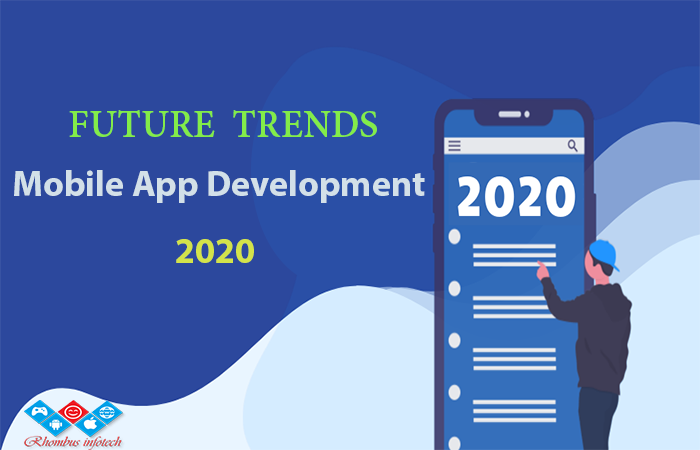Nowadays, mobile apps have become an integral part of the digital ecosystem. It is very crucial to stay updated with the latest trends to get the most out of your mobile app.
1. App Based on Cloud Computing:
Cloud technology has various benefits attached to it. Some of these benefits include less operational and hosting costs, scalable architecture, seamless performance, more productivity, and expandable storage among others.
Cloud-based mobile apps decrease the pressure on the smartphone or tablet’s internal memory as it gets data straight from the cloud. Thus, the cloud is useful for both business owners and app developers.
Currently, cloud technology is most used to not impact the internal memory of a device. That is why Box, Dropbox, Google Drive and other apps working similarly are becoming a lot more popular than ever before.Also, the cloud saves money and is more secure than most traditional computing solutions.
2.Blockchain
Blockchain goes beyond cryptocurrency technology. A virtual economic transactions account book can be processed to record not only monetary transactions but basically anything that has value.
Blockchain adds value in so many ways to the daily, everyday things we do in our businesses and even in our personal lives.
The applications of Blockchain are basically limitless, from obvious uses such as security and finance to manufacturing.
Blockchain has proven itself to be of value when it comes to implementing item tracking enhancements, quality controls, and security levels. You can also use it in the stock market, in e-commerce, as virtual wallets, as smart contracting and in tracking.
3.Augumented Reality
Conventional gaming and ordinary apps have been completely transformed with virtual reality (VR) and augmented reality (AR).
Leading organizations like Google and Apple have released their own AR kits (AR Core and AR Kit respectively) to assist with Android App Development and iOS App Development.
When you think of AR, you may associate with all things “fun”, like Pokemon Go, but it can be applied for more regular tasks as well. One such example is with Google Translate.
It is an AR feature that enables you to start a camera mode inside the software and capture an image with the text you can’t read.
After this, it uses the AR technology to attempt translating the text. Yet another example is the IKEA catalog where customers can browse through various pages and check what is on offer.
In the domain of VR, the latest news is linked with v-commerce. With this association, there is a chance of shaking up the whole e-commerce industry.
Customers will be enabled to test out gears, try on clothes and many other products prior to purchase
4.Artificial Intelligence
Many of the biggest companies today have the budget for mobile app development with artificial intelligence (AI). But AI implementations don’t have to end there.
A subcategory of AI named Machine Learning is another Mobile App Future Trends. An example of such includes Netflix that applies algorithms modifying to user response to offer them with personalized content.
Tinder too, for instance, is using machine learning to boost users’ chances to find their matches. It is now easier to find a parking spot on Google Maps thanks to machine learning as well.
5.Internet of Things
Analysts estimate important highlights from the Internet of Things (IoT) domain in the coming years.
According to an article published by Forbes in 2018, IoT is going to a major player by 2020. Every device prefixed with the word “smart” will be associated with IoT.
The numbers linked with the value of IoT differ but the trend remains the same: it is growing, it has grown and it will keep growing.
Considering this, it is obvious that the market requires enterprises that can create stylized IoT applications, web apps, devices and sensors, and both B2C and B2B mobile applications on the user end.
6.Location and Motion sensing
Most smartphones nowadays come with capabilities of location sensors that use several methods of positioning to offer various granularities of position information.
It is easier to provide information and services when the app knows where exactly the user is. Apps for motion sensing are utilized in anti-theft, security, games, and power-saving.
Location sensor apps are used in fitness apps, games, geotagging and vehicle navigation. Apps that use exact indoor location apply technologies such as beacons and Wi-Fi among others.
7.Swift Language in Demand
Ordinarily, the principal objective of the Swift programming language is to improve the pace of app invention whereas decreasing overall expense.
Swift is used in iOS App Development. Among the greatest highlighting traits of it are the Interactive Playgrounds, which lets developers make modifications to any piece of code, without recompilation and correct mistakes in order to view a sequence set on a device or emulator.
This language unquestionably has great importance in the mobile application development area now.
8.Instant Apps
It is a kind of local app that the user need not either install or download. It supports developers to deliver a greater exchange ratio as contrasted to a conventional app. The most feasible reason for this is excellent user experience.
9.5G
5G technology has advantages in data safety, AR, 3D gaming and speed among others. Developers can also improve app functionality with 5G.
They need to work with 5G as apps generated particularly in places with fast Wi-Fi and fast mobile services work adequately for users with inadequate speed advantages.
10.Low Code Development
Low code development intends to reduce the complexity of development by eliminating as much of manual coding as attainable. Thus, this is an exciting trend to look ahead for as well.
Conclusion:With so many developments in the mobile application industry, the future looks promising and we can’t wait to see what is next.

